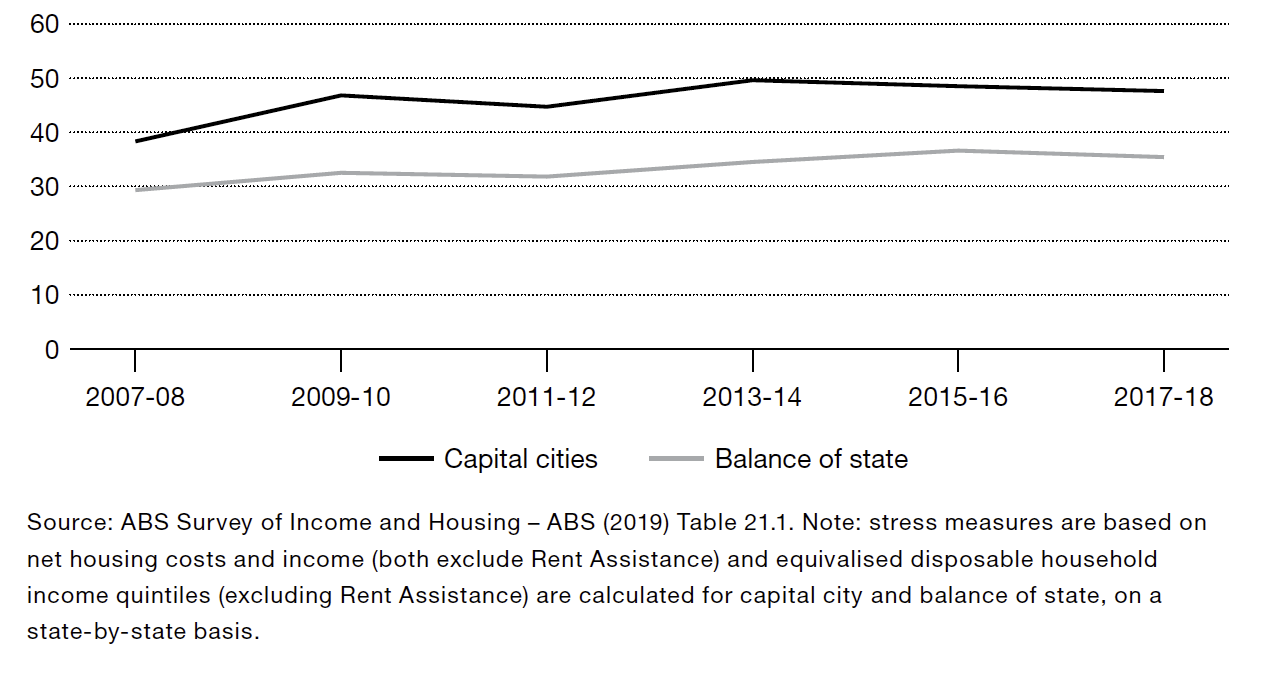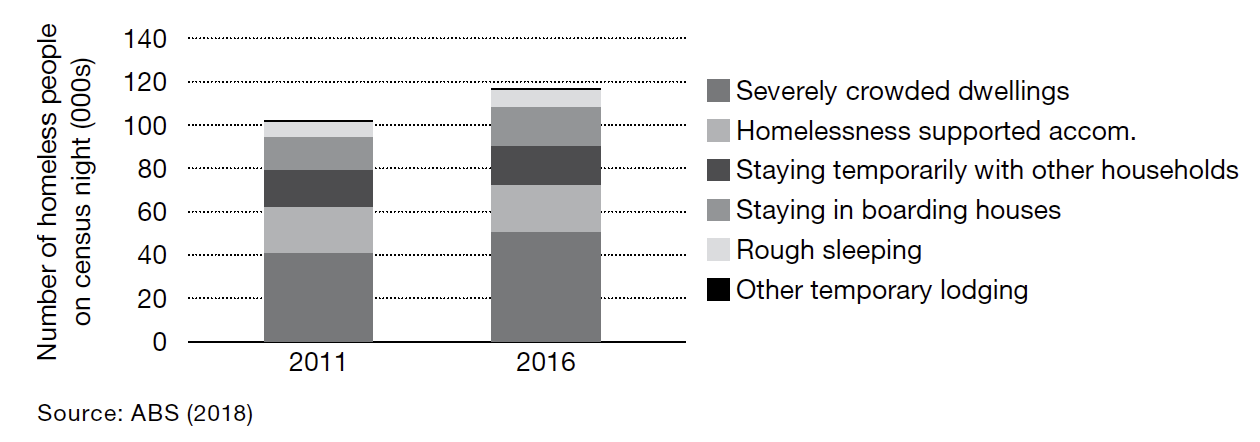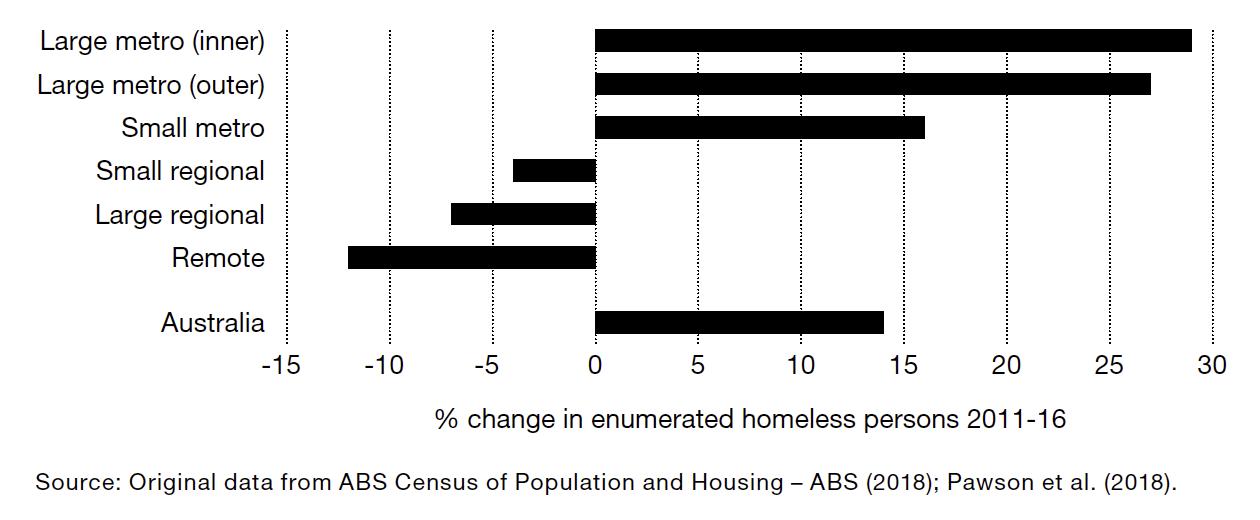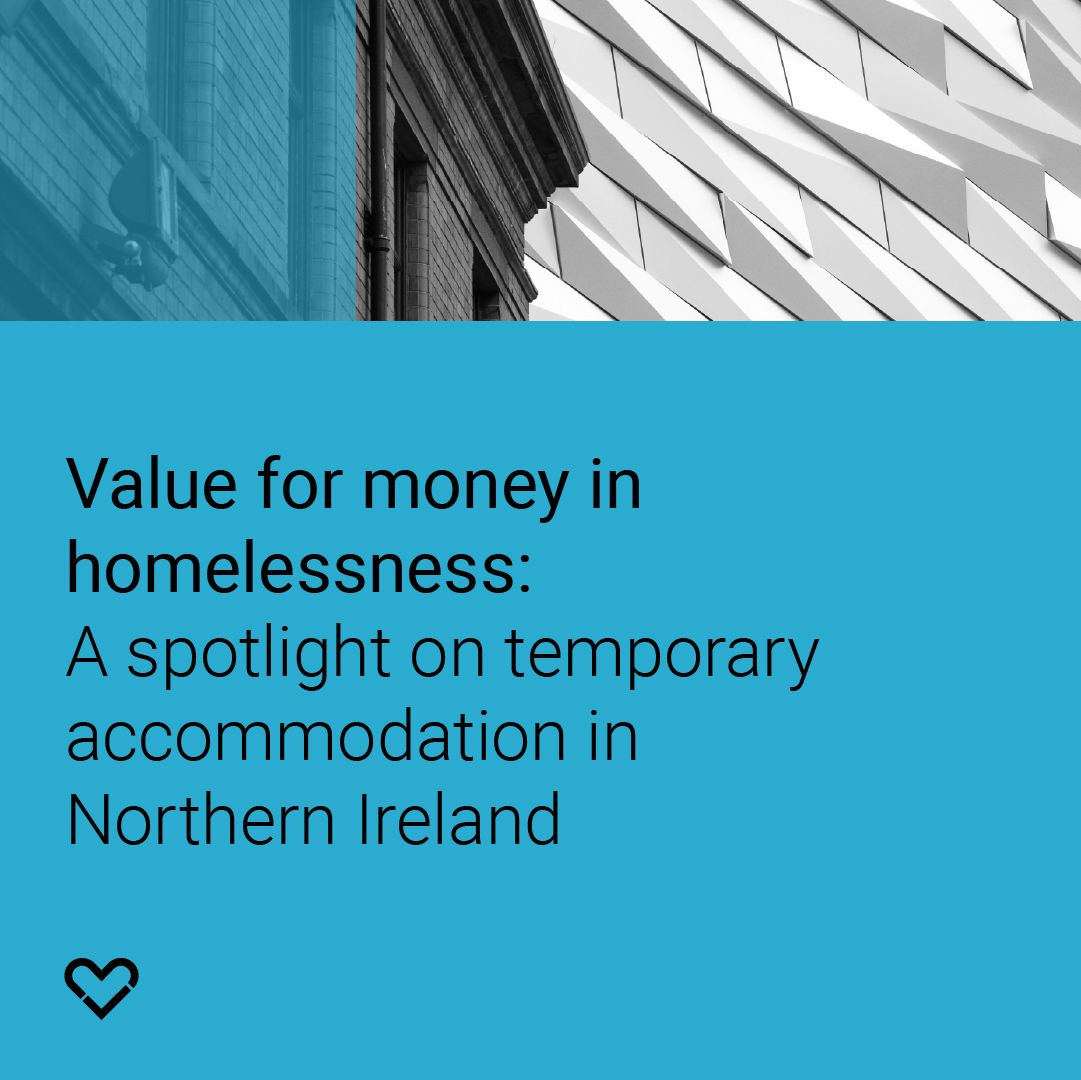European Journal of Homelessness: Housing Affordability and Homelessness: Probing Australian Evidence
Outline of the Study
This study examines the relationship between housing affordability and homelessness in Australia, providing statistical evidence of how rising rental costs directly impact housing security for people on low incomes. The research reviews over 20 years of housing affordability data alongside homelessness statistics, to demonstrate the clear connections that exist between unaffordable housing and people experiencing homelessness. The analysis is particularly relevant given rapid rental price increases during the COVID-19 pandemic.
Findings in brief
- Housing costs saw marked and sustained increases from 2005 for people in the lowest income quintile
- Rental stress rates have risen significantly over the past decade - by 9% for capital city renters and 6%for regional renters
- Nationally, rents rose by 6.6% in 2021, the highest rate for more than a decade. Rents in Australia’s regions increased by 11.3% during the same period
- There is a severe national shortage of affordable private rented housing for people in the lowest income quintile
- Indigenous Australians experience homelessness at 10 times the rate of the general population
- Homelessness increased by 30% over the 10 years between 2006 - 2016 and 14% in the second five years of this period
- The proportion of people in severely overcrowded accommodation - the largest group of people experiencing homelessness - increased by 23% between 2011 - 2016
- Studies indicate that a 1% increase in affordable private rentals decreases homelessness rates by around 0.7%, but that a $10 increase in median rents increases homelessness rates by 1.1% and a $100 increase in median weekly rent increases the risk of entering homelessness by 1.6%.
Recommendations in brief
- Increase the supply of affordable private rental housing for people on low incomes
- Closely monitor regional rental markets, as pandemic-driven remote work patterns may permanently reshape housing demand outside major cities and rental affordability challenges spread to previously more affordable regional areas
- Develop targeted interventions for Indigenous communities, to address disproportionate rates of homelessness amongst Aboriginal and Torres Strait Islander peoples
- Consider the relationship between housing market conditions and patterns of homelessness when developing prevention strategies
- Explore housing policy reforms that move beyond reliance on private market solutions for accommodating people on low income; income support and private rental assistance schemes
- Address structural economic factors contributing to housing unaffordability
- Develop international comparative research to understand how housing affordability impacts homelessness in different national contexts.












.jpg)

